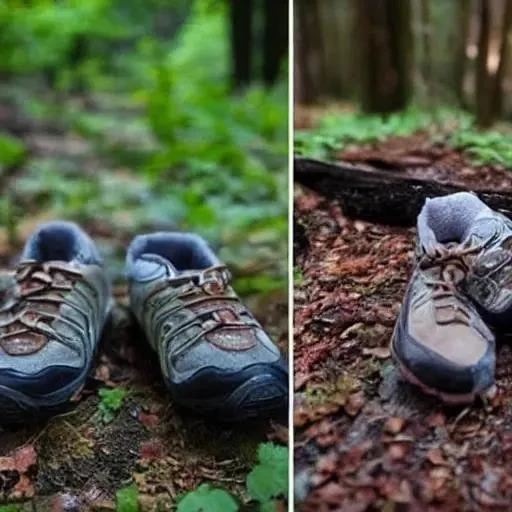
For outdoor enthusiasts and seasoned trekkers alike‚ the call of the wild is an irresistible siren song‚ beckoning us to explore towering peaks‚ serene forests‚ and winding trails. Each step taken is a testament to our adventurous spirit‚ powered by the unsung heroes beneath our feet: our hiking shoes. These indispensable companions bear the brunt of every challenge‚ from jagged rocks to slippery slopes‚ safeguarding our journey with unwavering dedication. Yet‚ a fundamental question often lingers‚ overshadowed by the excitement of the next trek: how often should we truly replace these vital pieces of gear? Understanding this isn’t merely about maintaining equipment; it’s about preserving comfort‚ preventing injury‚ and ultimately‚ ensuring your enduring connection with nature remains unhindered.
Ignoring the subtle signs of wear and tear on your hiking footwear can transform a blissful wilderness escape into an arduous‚ even painful‚ ordeal. A deteriorated sole‚ a compromised midsole‚ or persistent leaks can diminish stability‚ reduce cushioning‚ and expose your feet to unnecessary strain‚ potentially leading to blisters‚ sprains‚ or more chronic issues. By proactively assessing and replacing your hiking shoes‚ you are not simply buying a new pair; you are investing in countless future adventures‚ safeguarding your health‚ and optimizing your performance on every challenging ascent and exhilarating descent. This crucial decision empowers you to fully embrace the trail ahead‚ confidently conquering new horizons with reliable support and unparalleled comfort.
Key Considerations for Hiking Shoe Replacement
The longevity of your hiking shoes is influenced by a myriad of factors‚ from usage intensity to shoe construction. Understanding these variables is paramount to making informed decisions for your foot health and trekking safety.
| Category | Key Information | Average Range/Guideline | Important Notes/Influencing Factors |
|---|---|---|---|
| Physical Indicators of Wear | Visual cues that signal the end of your shoe’s lifespan. |
| Regular inspection is crucial. These signs often appear before significant mileage is accrued‚ especially on rugged terrain. |
| Mileage Guidelines | The approximate distance your shoes can endure before performance degradation. |
| Varies significantly with user gait‚ pack weight‚ terrain type (e.g.‚ rocky vs. smooth)‚ and shoe construction. Some users report trail runners lasting 300 miles‚ while others get 1000-1500 miles from regular hiking shoes. |
| Time-Based Recommendations | General lifespan irrespective of mileage‚ considering material degradation. |
| Even if mileage is low‚ materials like glues and cushioning can degrade over time due to environmental exposure‚ storage conditions‚ and natural aging. |
| Personal Factors | Individual characteristics impacting shoe wear. | Not quantifiable in a range‚ but highly impactful. | Gait‚ body weight‚ pack weight‚ foot strike pattern‚ and frequency/intensity of use all play significant roles. Pain or discomfort during/after hikes is a major indicator. |
For further insights on footwear care and selection‚ consider reputable outdoor gear resources or consult with specialized retailers.
Beyond the obvious visual cues‚ such as a tread as bald as a racing slick or a sole performing a dramatic separation from the boot‚ the invisible enemy of midsole compression can be incredibly insidious. Just like the suspension on a car‚ the cushioning in your hiking shoes slowly breaks down with every impact‚ gradually losing its ability to absorb shock and provide essential support. This silent degradation can lead to increased fatigue‚ joint strain‚ and a higher risk of injury‚ transforming a once comfortable stride into a jarring experience. Industry experts and podiatrists consistently emphasize that a loss of midsole integrity is a primary reason for premature shoe replacement‚ often manifesting as persistent foot or knee pain after even moderate activity.
The type of terrain you frequently navigate also profoundly impacts your footwear’s longevity. Traversing relentlessly rocky‚ abrasive trails will inevitably accelerate wear compared to gentle‚ well-maintained paths. Similarly‚ the style of your hiking shoe plays a pivotal role; lightweight trail runners‚ engineered for agility and speed‚ typically have a shorter lifespan‚ often requiring replacement after 300-500 miles. In contrast‚ robust mountaineering boots‚ constructed with stiffer materials and more durable outsoles‚ can reliably endure 600 to 1‚000 miles‚ sometimes even more‚ depending on meticulous care and the severity of their expeditions. Understanding these distinctions is crucial for tailoring your replacement schedule to your specific adventuring profile.
Adopting a proactive approach to hiking shoe maintenance can significantly extend their life‚ delaying the inevitable moment of replacement. Regularly cleaning off mud and debris‚ allowing them to air dry completely‚ and storing them in a cool‚ dry place can prevent material degradation and mold growth. Some seasoned trekkers even rotate between two or three pairs of shoes‚ allowing each pair ample time to decompress and dry out between uses. By integrating these simple yet remarkably effective habits into your routine‚ you are not just preserving your gear; you are nurturing a sustainable relationship with your equipment‚ ensuring it performs optimally for every breathtaking vista and challenging ascent.
Ultimately‚ the decision of when to replace your hiking shoes is a deeply personal one‚ guided by a combination of objective indicators and subjective comfort. While mileage and time serve as valuable benchmarks‚ your body’s feedback is the most critical determinant. If you’re experiencing unusual aches‚ persistent hot spots‚ or a noticeable decline in support‚ it’s a clear signal that your trusted companions are nearing the end of their service. Embracing this truth isn’t a defeat; it’s an opportunity. Investing in a fresh pair of hiking shoes is an act of self-care‚ a commitment to future exploration‚ and a guarantee that your next grand adventure will be supported by the very best foundation. So‚ listen to your feet‚ observe the signs‚ and step confidently into your next chapter of discovery!
